
Original Link: https://www.anandtech.com/show/1357
Weekly Buyer's Guide: Mid-Range System - June 2004
by Evan Lieb on June 18, 2004 9:00 AM EST- Posted in
- Guides
Index
Currently, we are experimenting a bit with our Buyer's Guides to see if we can better meet the needs of a wider range of users, both in terms of the components that we recommend and the prices of those components. We will continue to produce an Entry Level, Mid-Range, High End, and Overclocking system every month, but we have also decided to include SFF guides and perhaps a mobile-related guide to our arsenal as well. We will keep with our current format (Week 1: Entry Level System, Week 2: Mid-Range System, Week 3: High End System, Week 4: Overclocking System) until we get a better feel for what our readers want. So far, everything looks to be on schedule for AnandTech's first SFF Buyer's Guide next week. So, if you feel like letting us know what you'd like to see in terms of component picks and price points on those picks in future guides, go ahead and write up your feelings in our comments section, located at the bottom of the page.With that out of the way, we are still going to continue to evaluate products like we have in all our other guides over the last few months. That is, for every component that goes into a computer, we offer our recommendation for a piece of hardware as well as our alternative on that type of hardware. We've added alternative hardware picks to our guides because it allows AnandTech to recommend a wider variety of hardware (especially for those willing to spend a little more than what we budget for a particular system). To be clear, alternative picks tell you just that - your alternatives, which in some cases will be better suited for your needs, and in other cases, will not be. But at the same time, we can still be assertive enough with a first place recommendation so that new buyers aren't indecisive or confused about what to purchase. Most of the prices listed for the hardware that we recommend can be found in our very own RealTime Pricing Engine. Any prices not found in our engine can be found on pricewatch.com. We list pertinent parts of our RealTime pricing engine at the bottom of every page of our Buyer's Guides so that you can choose the lowest prices from a large variety of vendors all by yourself.
Mid-Range
While entry level (budget) systems should mainly be constructed with reliability and price in mind, with performance a fairly distant third consideration, mid-range systems have a slightly different order of priority. Reliability is still #1 priority, but performance and price are in a sort of a tie when building that mid-range system. Performance isn't of the utmost importance in this type of system, but it's also not ignored nearly as much as a plain, old entry level system is. Similarly, price isn't of utmost importance either, but buyers building a mid-range system must be mindful of the price of components nonetheless. Performance and price don't lag too far behind reliability for mid-range systems, in other words.With that all said, let's take a look at this week's new recommendations and alternatives.
CPU and Motherboard Recommendations
CPU: AMD Athlon 64 2800+ 512K L2 1.8GHz retail (heatsink and fan included)Motherboard: MSI K8N Neo Platinum (nForce3 250Gb)
Price: CPU - $186 shipped. Motherboard - $131 shipped

This week, we have finally switched from recommending Athlon XP processors to Athlon 64 processors. The two biggest reasons for this change are: 1) prices on "low-end" Athlon 64 processors have come down noticeably over the last few months, and 2) motherboards to support Socket 754 Athlon 64 technology that were worth buying (namely VIA K8T800 Pro and nForce3 250Gb chipsets) have finally become available from major motherboard makers in acceptable quantities. AMD's Athlon 64 2800+ running at 1.8GHz and coming with a 512K L2 cache is a very fast mid-range processor that has a distinct advantage over Intel due to its ability to run 64-bit operating systems and 64-bit applications if the need were to ever arise. Microsoft has officially and unofficially supported AMD's move to 64-bit desktop computing for years now, and even Intel themselves said they would make their future Prescott processors compatible with AMD's 64-bit technology (dubbed x86-64). So overall, as a mid-range processor, you simply cannot beat the value of an Athlon 64 2800+.

This choice was more difficult to make. Epox does offer a similarly great motherboard to MSI, and so to us, it was indeed almost a tossup. But MSI's K8N Neo Platinum was ultimately chosen because it offered a few extra BIOS features and a slightly lower price. Anyway, offering the nForce3 250Gb chipset itself is easily the biggest feature that the K8N Neo Platinum motherboard carries. This one-chip solution offers native Firewall capability, 4-drive SATA/IDE RAID, and native GbE (Gigabit Ethernet). MSI adds in features like IEEE 1394 FireWire support, 8-channel sound and superb BIOS features and overclocking ability, making this, simply put, an awesome motherboard. MSI plans on using this type of blueprint for their Socket 939 motherboards too, as well as for the nForce3 250Gb Ultra (which adds official 1GHz HT support), and that can only mean more good news for MSI's Athlon 64 market from top to bottom. For more information on MSI's K8N Neo Platinum and Socket 754 motherboards, take a look at Wesley's MSI K8N Neo Platinum review here and Wesley's Socket 754 roundup here.
Listed below is part of our RealTime pricing engine, which lists the lowest prices available on the AMD CPUs and motherboards from many different reputable vendors:
If you cannot find the lowest prices on the products that we've recommended on this page, it's because we don't list some of them in our RealTime pricing engine. Until we do, we suggest that you do an independent search online at the various vendors' web sites. Just pick and choose where you want to buy your products by looking for a vendor located under the "Vendor" heading.
CPU and Motherboard Alternatives
CPU: Intel Pentium 4 3.0C 800MHz FSB (512K L2 cache) NorthwoodMotherboard: ASUS P4P800 Deluxe (865PE chipset)
Price: CPU - $224 shipped (retail heatsink and fan). Motherboard - $112 shipped

Knowing just how much Athlon 64 processors trump current Pentium 4 processors in games, it would only be fair to point out the Pentium 4's advantages in other programs like encoding or specialized apps, such as Lightwave. Certain 3D rendering apps like Maya will go back and forth between the Athlon 64 and Pentium 4, though the P4 does eventually win out in that area. Business apps are no contest, though, and AMD continues to dominate this area of life. This annually "weak" area of performance for Intel and their consistently higher prices are keeping them from mid-range and entry level CPU recommendations.
But overall, besides the $38 price delta, the 3.0C offers nearly the same performance as an Athlon 64 2800+ (512K L2). Certain steppings of the 3.0C are even available online that overclock extraordinarily well, and so that may be a major reason to go with this particular processor. We wouldn't bank on finding the perfect 3.0C stepping of your dreams, though.
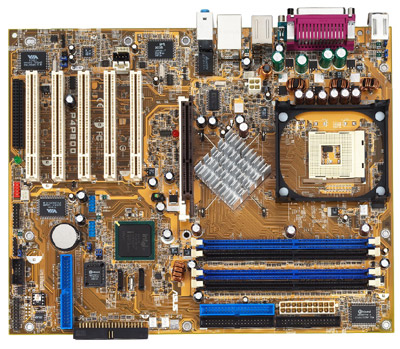
This pick continues to be a tough one, since ABIT, Gigabyte, DFI, MSI and other motherboard manufacturers offer excellent mid-range 865PE offerings. In the end, ASUS had just enough features and performance with their P4P800 Deluxe to edge out the other contenders, not to mention the fact that we've personally tested and approved this motherboard for reliability. The P4P800 Deluxe is one of the best currently available Intel motherboards that you can pair with an 800MHz FSB processor, and therefore, a 3.0C processor is perfect. The P4P800-D has an excellent balance of great features (SATA and IDE RAID, Gigabit LAN, IEEE1394 FireWire, etc.), 865PE performance, and a very good "mid-range" price at $112 shipped. Most online vendors sell this board for more like $112-$118, but as you can see, you will be able to find it for less at a few reputable online vendors. If you were so inclined to enter into more experienced user territory, the P4P800 Deluxe is also an excellent motherboard for FSB overclocking. Otherwise, we suggest that you stick to stock, and not overclocked speeds, if you are a beginning builder.
For a more in-depth look at the ASUS P4P800 Deluxe, we suggest you take a look at our Intel motherboard roundup from last year.
Listed below is part of our RealTime pricing engine, which lists the lowest prices available on the Intel CPUs and motherboards from many different reputable vendors:
If you cannot find the lowest prices on the products that we've recommended on this page, it's because we don't list some of them in our RealTime pricing engine. Until we do, we suggest that you do an independent search online at the various vendors' web sites. Just pick and choose where you want to buy your products by looking for a vendor located under the "Vendor" heading.
Memory
Recommendation: 2 X 256MB OCZ PC3500 EL (Enhanced Latency) CAS2.0Price: $120 shipped

We've talked about OCZ's troubled past and history in detail before, but thankfully, those issues have been resolved and OCZ is finally able to bring great memory to market, and has been doing so for over a year now. With that said, OCZ has had tremendous success with their EL series of modules for a reason: great price/performance ratio. At only slightly more than the Kingston ValueRAM that we recommended two months before, you get lower CAS timings (CAS 2-2-3-6 1T) with OCZ EL modules instead of high CAS timings (CAS 3-3-3 4T) with the cheaper no-name modules. Lower CAS timings along with the EL series' overclocking capability translates into better performance for a great price. Remember, this is PC3500; you can run it at DDR433.
Recommendation: 2 X 512MB Mushkin PC3500 Level One Dual Pack (CAS2)
Price: $306 shipped
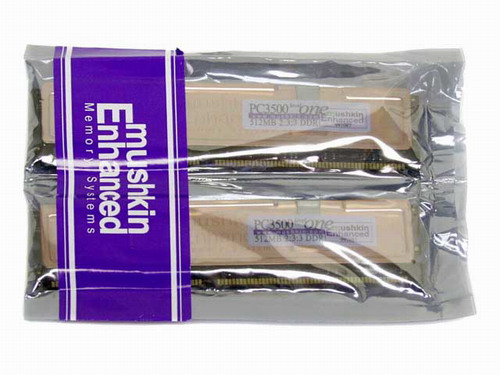
While we have been using OCZ's Platinum modules as the standard for a majority of AnandTech's testbeds, we have also been using Mushkin Level One memory in conjunction with the OCZ. Unfortunately, it is getting harder and harder to find dual packs nowadays, but Mushkin Level One Dual Packs are available at large vendors like Axion and Newegg, so they're still out there. We've been able to do lots of testing with these specific PC3500 modules and they indeed run stably at PC3500 (433MHz DDR) on many currently available motherboards. There are many PC3500 modules that aren't capable of reliable DDR433 speeds on popular motherboards, so be wary. But motherboards such as the MSI K8N Neo Platinum and ASUS P4P800 Deluxe will run these modules very well, so we suggest that you take a look at them when purchasing your motherboard. However, don't get confused. PC3500 is not an officially sanctioned JEDEC spec, and therefore there are no motherboards on the market which can claim that they officially support PC3500 speeds. PC3500 is quite easily attainable with modern motherboards, but just be aware that PC3200, not PC3500, is the highest speed that your motherboard manufacturer will officially support under warranty.
Video
Recommendation: 128MB Sapphire Radeon 9600 Pro, DVI, TV-outPrice: $126 shipped

Ever since the release of the ATI R300 cores and their later iterations, ATI has either led or has had a clear lead over NVIDIA in terms of performance and price. The same is still true of ATI at the moment, 20+ months since the release and availability of R300 core video cards. That's why, today, we highly recommend purchasing a 9600 Pro for your mid-range system, as it offers great DX8 and good DX9 performance for the price. To put it simply, the 9600 Pro is the best bang-for-the-buck video card on the market. Sapphire makes a great 9600 Pro for just $126 or so shipped; the additions of DVI and TV-out for this price are unique, and overall, a great deal. 2D IQ quality is excellent, up to 1600x1200 desktop resolutions with the right monitor, essentially on par with retail ATI versions of the 9600 Pro. As previously mentioned, 3D performance is excellent in DX8 games and good in DX9 games, and 128MB of memory will be plenty until more intense DX9 games are released later this year and next year. We can also attest to the fact that these cards have been known to overclock extremely well, and usually come with 3.3ns Samsung memory chips.
Of course, if you're not a gamer or don't plan on playing games more than once a year, or ever, a 9600 Pro would be a pointless purchase. We would instead suggest the ATI Radeon 9200SE that we recommended in last week's Entry Level Guide, which goes for about $40 shipped online currently. The 9200SE provides the excellent 2D quality non-gamers need, along with reliable drivers, great online ATI customer support, and up to DX8.1 support for future Microsoft operating systems. You could always opt for the cheapest of cheap ATI cards in the Radeon 7000, but you won't be getting DX8 support, which should be the bare minimum for computer systems that plan to be used beyond the next 18-24 months, when the next operating system's release will necessitate DX8 of some form for smooth operation.
Alternative: 128MB ATI Radeon 9800 Pro, DVI, TV-out
Price: $204 shipped

ATI's 9800 Pro has been rapidly declining in price for the last several months, and over the last two months has stabilized around the $200 mark. Even with the introduction of ATI's next generation X800 GPU, we don't see the 9800 Pro dropping more than a few more dollars in retail from where it stands now for the foreseeable future. ATI's soon-to-be widely available X800 GPU and the 9800 Pro's lower price are precisely why we believe that the 9800 Pro is a perfect alternative to the 9600 Pro (or even 9700 Pro) for your mid-range system. It offers good performance for tomorrow's games and great performance for the vast majority of today's games. The 128MB memory chips at their rated 3.3ns is standard these days and should fit the needs of a mid-range user. Thankfully, 2D IQ is still superb with high end retail ATI video cards like the 9800 Pro, so non-gamers have nothing to worry about in that department.
Listed below is part of our RealTime pricing engine, which lists the lowest prices available on ATI video cards from many different reputable vendors:
If you cannot find the lowest prices on the products that we've recommended on this page, it's because we don't list some of them in our RealTime pricing engine. Until we do, we suggest that you do an independent search online at the various vendors' web sites. Just pick and choose where you want to buy your products by looking for a vendor located under the "Vendor" heading.
Monitor
Recommendation: Samsung 955DF (19") DynaFlat CRTPrice: $200 shipped
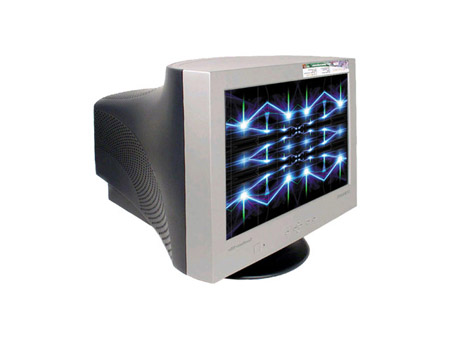
To this day, the 955DF is still one of the best bang-for-the-buck 19" monitors on the market. The .20mm dot pitch, max resolution of 1600x1200 @ 68Hz, and well known reliability, usability, low price and picture quality of this monitor are all reasons why we highly suggest taking a look at it. We've had extensive experience with this monitor, having done a review of it back in April 2002. To this day, we are still impressed with this monitor and can still confidently recommend it. As you may have guessed by now, CRT technology (especially in the bang-for-your-buck price range) hasn't moved much in quite some time, but that is the norm in this industry. So, don't be surprised if we continue to recommend this monitor for mid-range Buyer's Guides for some time.
Alternative: NEC Diamondtron 19" CRT (model DP930SB-BK)
Price: $326 shipped

This NEC model is one of the best mid-range models of the famous Diamondtron series of monitors. Max resolution is 1920x1440 and dot pitch is an excellent 0.24mm. However, the clarity and refresh capability of this monitor are much better than the 955DF. So if you're willing to dish out the cash, this is more than a capable alternative.
Computer Case
Recommendation: CaseEdge TS1 Mid-TowerPrice: $40 shipped
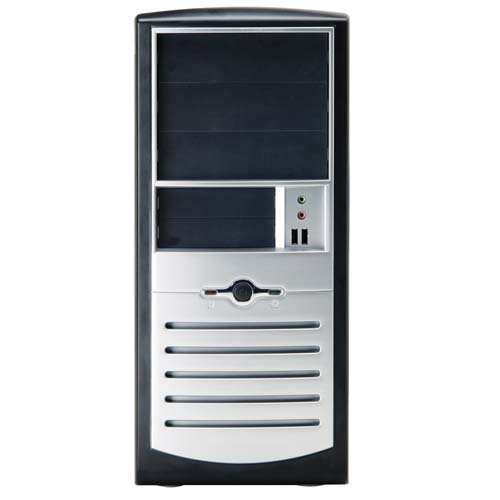
While we recommended this case last week, we can't help but recommend it again because of just how good it is for the price. You can purchase this case online at www.pcclub.com or pick it up at a local PC Club. Not only is the black and silver edition of this case very good-looking, the set-up is very easy to use and convenient in general. For one, the motherboard mounting screws come installed in their proper holes, a welcome change from having to screw them in by hand. Secondly, the hard drive and optical drive bays contain plastic clips that allow you to install your drives simply and easily without screws. All in all, this case basically comes completely "preinstalled", and even includes a 300W PSU (power supply unit). However, unlike last week's system, this week's system requires a higher quality PSU and slightly higher wattage. We suggest an Enlight 360W power supply (model # 8361934A1), which can be found for $34 shipped online or at a local PC outlet. This will supply the necessary amount of power and stable voltages for your system.
Alternative: Kingwin K11 Aluminum ATX case
Price: $70 shipped
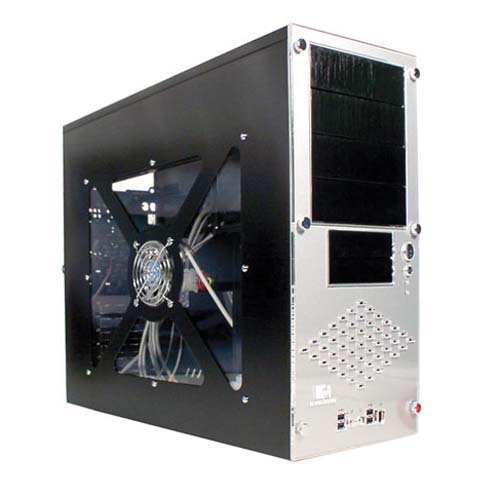
Kingwin makes a great aluminum computer case, dubbed their K11 series. Even with all your components installed, the case is still relatively light, even light enough to carry to a LAN party or to your friend's or family's house. It comes with four 5.25" bays, two external 3.5" bays, and five internal 3.5" bays, four USB 2.0 ports, and one Audio, Mic, FireWire port. There are two front fans, one rear fan, and one top fan included as well. As we just suggested, a 360W Enlight power supply is recommended for a system that draws as much power as this one.
If you cannot find the lowest prices on the products that we've recommended on this page, it's because we don't list some of them in our RealTime pricing engine. Until we do, we suggest that you do an independent search online at the various vendors' web sites. Just pick and choose where you want to buy your products by looking for a vendor located under the "Vendor" heading.
Sound Card
For a mid-range system, you most likely aren't going to need a lot of audio processing power unless you're an audiophile. If you are an audiophile, then you probably already have a pretty good idea of what kind of programs you run that would require the power of, say, an Audigy 2 sound card and a Gigaworks surround sound speaker system. But if you're just looking for basic sound that is of good quality (most onboard sound solutions sound identical) that will play music, games, etc., then the onboard sound on either your MSI K8N Neo Platinum motherboard or your ASUS P4P800 Deluxe motherboard will more than suffice. If you're looking for something more potent, we suggest that you peruse our High End Buyer's Guide from a few weeks ago.Speakers
Recommendation: Logitech Z640 5.1 speakersPrice: $55 shipped
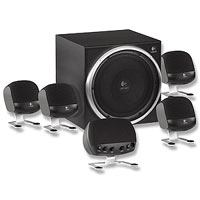
While totally unnecessary if you're not a gamer or audiophile, the Z640s are nonetheless a very popular and low cost set of high quality speakers. Whether you talk about the 45.5W satellite output/25.7W subwoofer output or the very effective magnetic shielding that protects your speakers from interference from other devices, you can't help but love these speakers. They have a great reputation for reliability and longevity in general, and our extensive personal use of these speakers only backs up that claim. If you want surround sound on the cheap, it's hard to beat the Z640. If you're a big gamer, we suggest the Audigy 2, if you can afford to spend the money. Personally, we find the immersive gaming experience of the Z640s and an Audigy 2 to be truly great, but others may not be so impressed and will opt for the cheaper variant.
Alternative: Logitech Z-5300 THX Certified 5.1 speaker
Price: $147 shipped

The Z-5300 is, more or less, the more powerful version of Logitech's more successful brother, the Z-640. Besides obviously supporting 5.1 channels of sound, the Z-5300 is able to boast such features as a 100W subwoofer and a greater than 85 dB signal to noise ratio. The surround sound gaming and movie experience is tremendous, paired with a good Audigy 2 sound card. These speakers can get impressively loud and best of all, we didn't encounter any sort of crackling or distortion as volume was turned up to excruciating levels. For the price, these speakers are almost as unbeatable as the Z-640's, though not quite the bargain considering the $88 price delta in favor of the Z-640. Still, the Z-5300's are a good "power" upgrade, so to speak.
If, for whatever reason, you're not interested in high-end sound and will be gaming or watching movies mostly with your headphones on, obviously an expensive surround sound system will be pretty useless. If that's the case, you may just want to opt for 2.0 or 2.1 speakers, such as the ones recommended in last week's Entry Level Guide. But, if you have to choose between a good sound card and a good speaker system, we suggest that you go with the speaker system.
If you cannot find the lowest prices on the products that we've recommended on this page, it's because we don't list some of them in our RealTime pricing engine. Until we do, we suggest that you do an independent search online at the various vendors' web sites. Just pick and choose where you want to buy your products by looking for a vendor located under the "Vendor" heading.
Networking
Recommendation: Onboard networkingPrice: $0
Nothing more than onboard networking is needed for a mid-range system like the one we're building today. However, a nice additional feature that the MSI K8N Neo Platinum and ASUS P4P800 Deluxe brings (in case you want to purchase our alternative), in terms of networking is its onboard Gigabit controller, capable of 10/100/1000 transfer speeds. The K8N Neo Platinum's use of the nForce3 250Gb allows it to perform especially well in these GbE situations. GbE isn't going to change your experience on the Internet, but Gigabit is very useful for transferring large amounts of data to and from multiple networked computers in, for example, an office or within a family of computers. Some will find the addition of Gigabit very useful for this purpose, while most will just stick to utilizing just the 10/100 capability.
Storage
Recommendation: Western Digital 800JB (80GB) 7200RPM (8MB cache)Price: $67 shipped
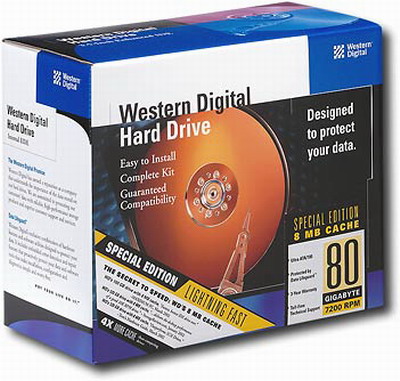
Western Digital's Caviar series of drives are still the best price/performance drives on the market, and literally the best in terms of price and performance. The "JB" in 800JB indicates that your WD drive has an 8MB buffer, which means that your drive is able to store more frequently-accessed data than a 2MB drive, vastly increasing performance. Thankfully, if you buy from the right manufacturer, you will receive a 3-year warranty with your drive, which is very useful if you're the unfortunate victim of hard drive death (usually identifiable by the "click of death" sound).
Alternative: Western Digital 1200JB 120GB 7200RPM (8MB cache) ATA
Price: $87 shipped

For an extra $20, you can upgrade your WD 800JB drive to 120GB, which, as you've probably guessed by now, offers an additional 40GB or so in storage capacity. This type of additional capacity can be exceedingly useful if you're someone who stores endless emails in Outlook, plays lots of games, listens to lots of MP3's, or simply needs additional space for the next 12 or more months down the road. Overall, there aren't that many differences of which you need to concern yourself between the 800JB and 1200JB, as they both come with the same 8MB buffer and both perform almost identically. Be wary of WD drives that emit the infamous "WD whine" that continues to annoy users to this day. Depending on your vendor, you may be able to return your drive for a quieter version. If this potential flaw is a major cause for concern to you, we suggest taking a look at Seagate's Barracuda series of hard drives, in the ATA or SATA form. Barracuda's are most renown for their quiet operation.
Optical Storage
Recommendation: Lite-On 52x32x52x16 Combo CD-RW/DVD-ROM drivePrice: $47 shipped
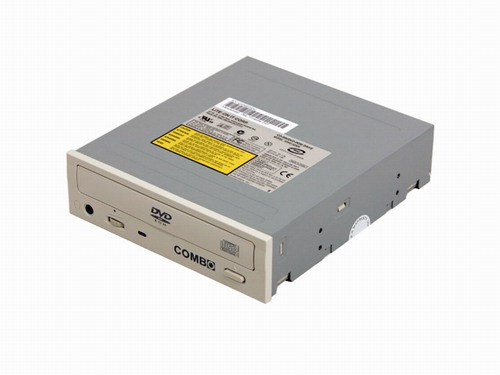
If you want to be able to watch DVDs, you can always opt for a combo drive. Its function essentially integrates CD burning and DVD watching into one drive. The added benefit is that you're getting a better price for this combo drive versus purchasing an additional drive. However, the price difference isn't all that huge ($15 at most) if you were to buy a separate drive, plus that second drive would allow you to watch DVDs while your burn CDs, which isn't possible with the combo drive. In the end, the decision is up to you as to how you want to configure optical storage.
Alternative: NuTech DDW-082 8X DVD+/-RW
Price: $70 shipped
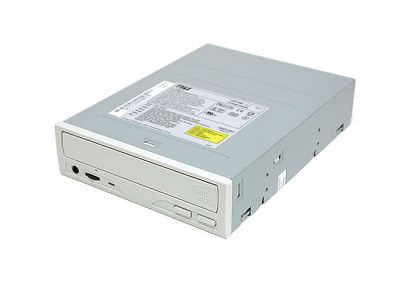
For a few months there, NEC's 2500A was a pretty hot buy for those who wanted a sort of cheap stopgap between today's 8X DVD+/-RW technology and tomorrow's 16X DVD+/-RW technology. No worries, simple, cheap. But the DDW-082 has sort of taken over that spot, especially at the tender price of just $70. So, today, we choose NuTech's DDW-082 8X DVD burner. We did an extensive roundup of 8X DVD burners just a few weeks ago, and concluded that the DDW-082 was the best burner of the bunch. We suggest that you read up on this roundup to learn more about modern day DVD burners. Here's an excerpt regarding the DDW-082:
Incredibly, this drive went from one of our worst performers to our best performer with simple firmware upgrades. Another great feature of this drive is the supported 8X write strategies on 4X media. The fact that this drive is also the cheapest drive in our roundup makes NuTech's DDW-082 a true underdog champion. The DDW-082 deserves our editor's choice award for this roundup.
You won't be seeing higher end DVD burners for quite some time (read: mid-summer), so this drive will last you many months. We'd also suggest reading this article.
Listed below is part of our RealTime pricing engine, which lists the lowest prices available on storage from many different reputable vendors:
If you cannot find the lowest prices on the products that we've recommended on this page, it's because we don't list some of them in our RealTime pricing engine. Until we do, we suggest that you do an independent search online at the various vendors' web sites. Just pick and choose where you want to buy your products by looking for a vendor located under the "Vendor" heading.
Keyboard and Mouse
While trivial, it's still important that you purchase the right keyboard and mouse. Different people have different preferences for a keyboard's look and feel, and the same goes for a mouse. Therefore, we suggest that you personally try out a keyboard and mouse. Recommending that you purchase these items online is misleading, as there are too many users with different preferences for this type of thing. Visit your nearest PC outlet to try out a keyboard and mouse yourself; a PC Club, Best Buy, CompUSA, or Circuit City store will do. We suggest that you start with Microsoft and Logitech keyboards and mice. Make sure you also check out optical mice from Microsoft and Logitech as well. A good solid optical mouse from either manufacturer should run about $20, but in some cases, can run as little as $10 if you can find the right deal.If you cannot find the lowest prices on the products that we've recommended on this page, it's because we don't list some of them in our RealTime pricing engine. Until we do, we suggest that you do an independent search online at the various vendors' web sites. Just pick and choose where you want to buy your products by looking for a vendor located under the "Vendor" heading.
Mid-Range System Summary
| Hardware | Component | Price |
| CPU & Cooling | AMD Athlon 64 2800+ retail (heatsink and fan included) | $186 |
| Motherboard | MSI K8N Neo Platinum (nForce3 250Gb) | $131 |
| Memory | 2 X 256MB OCZ PC3500 EL (Enhanced Latency) | $135 |
| Video Card | 128MB Sapphire Radeon 9600 Pro | $126 |
| Monitor | Samsung 19" DynaFlat 955DF | $200 |
| Computer Case | CaseEdge TS1 Mid Tower plus 360W PSU | $74 |
| Sound Card | Onboard sound | $0 |
| Speakers | Logitech Z640 5.1 | $55 |
| Networking | Onboard 10/100/1000 Gigabit Ethernet | $0 |
| Hard Drive | Western Digital 800JB (80GB) | $67 |
| CD-RW | Lite-On 52x32x52x16 Combo CD-RW/DVD-ROM | $47 |
| Bottom Line | - | $1021 |
$1021 is the final price of this week's mid-range system, not including any money that you'll spend on software (Windows XP Home or Professional, Office, etc.) or a keyboard and mouse.
When you look at how fast this system is for the money and the fact that you're getting 64-bit compatibility across the board, you can't help but enjoy how much hardware has progressed during the last 5 years. While pace and innovation in the hardware industry (and semiconductor industry, in general) have slowed down compared to 2000-2001, there is a rapid surge of good ideas and well thought out and executed plans that are finally rearing their heads in our homes. 64-bit computing and speeds that didn't seem possible just a few years ago are just some of those things.
Anyway, go build your system and let us know what you think in our comments section. And tell us what new stuff you'd like to see in our guides.







